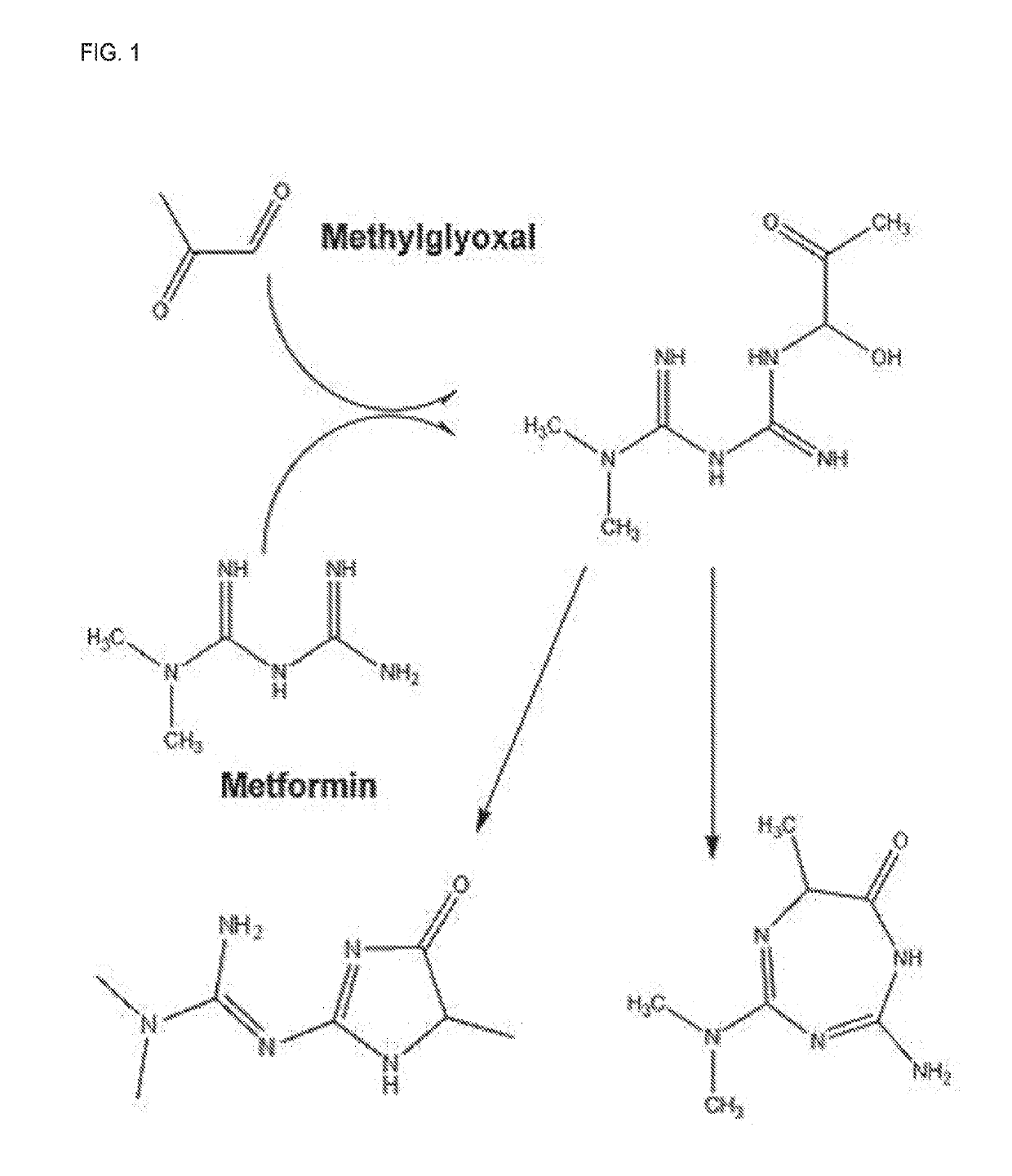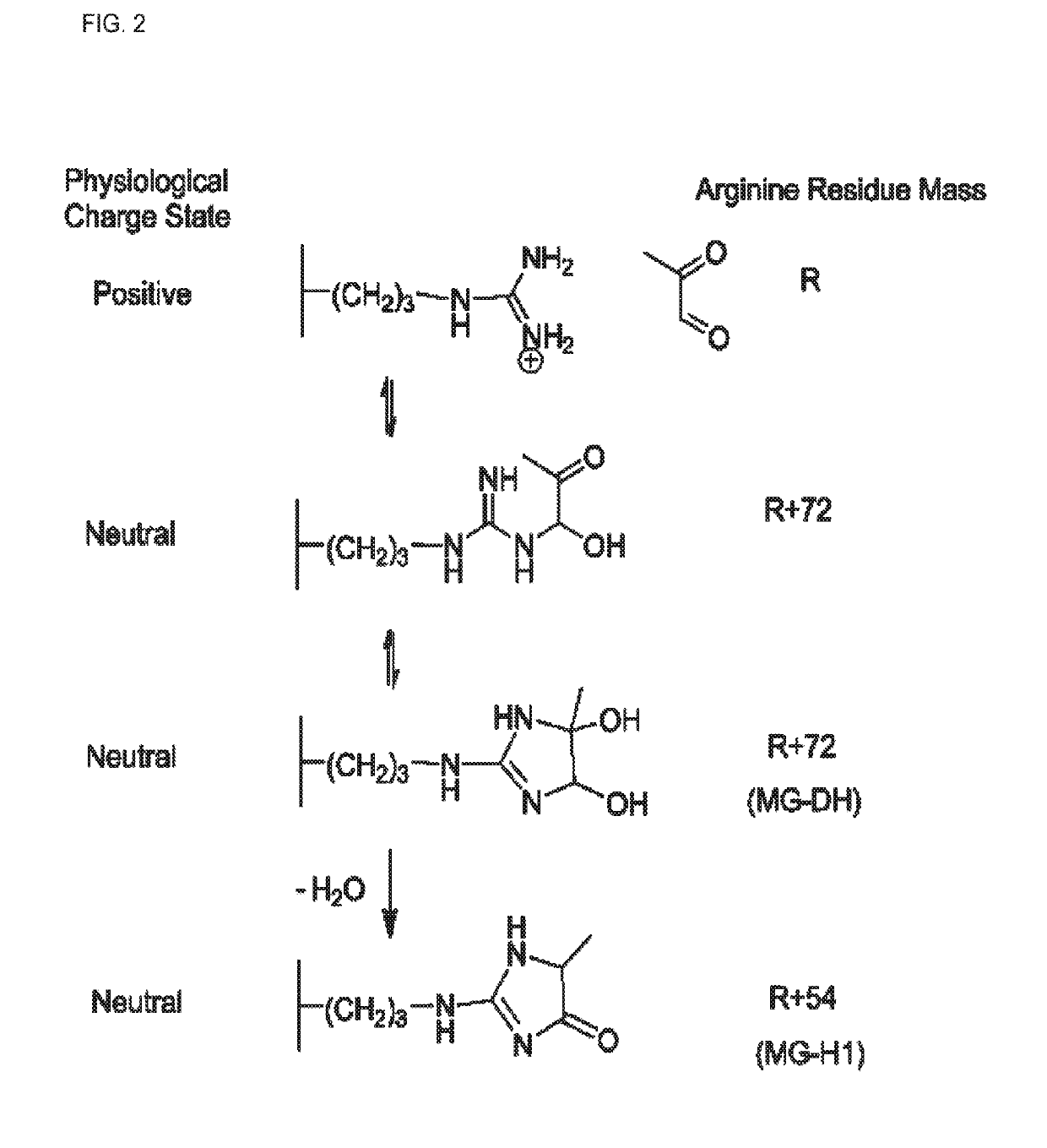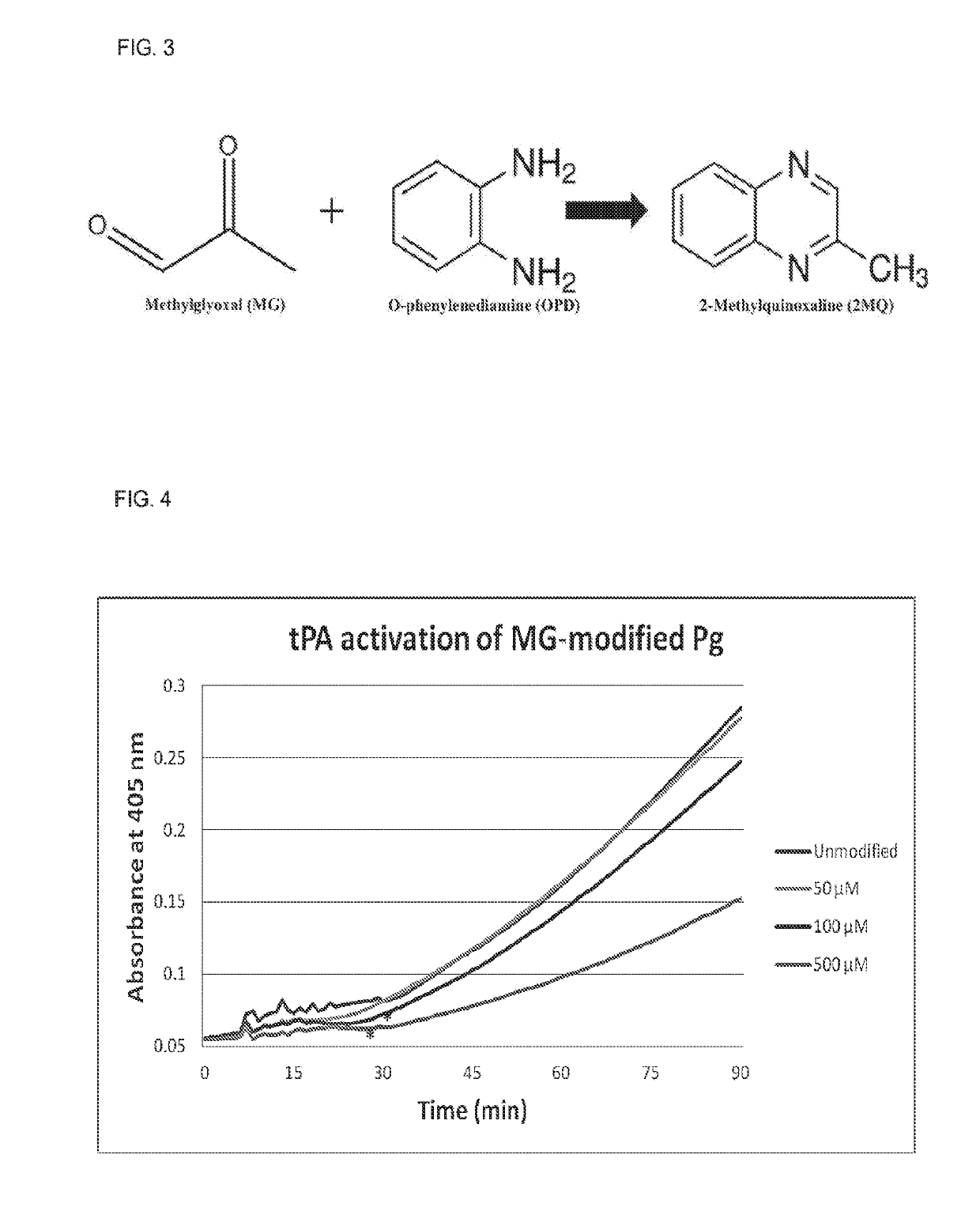Biomarkers of methylglyoxal and related methods thereof
a biomarker and methylglyoxal technology, applied in the field of biomarkers of methylglyoxal, can solve the problems of diabetes contributing to an increased risk of arteriosclerosis, many serious short-term problems, nerve damage and microvascular damage, and achieve the effect of preventing diabetic complications and lowering hepatic gluconeogenesis
- Summary
- Abstract
- Description
- Claims
- Application Information
AI Technical Summary
Benefits of technology
Problems solved by technology
Method used
Image
Examples
example 1
Discussion
[0170]Pg and the fibrinolytic system play an important role in normal breakdown of the fibrin backbone of a clot. Recently findings have shown that Pg activation into Pn is altered in patients with T2DM, and accordingly, fibrinolysis is impaired (Ajjan et al., 2013). Improved glycemic control was able to reverse this impairment. While they identified two potential NE-fructosyl-lysine modifications that could be an underlying mechanism behind this impairment, further work is necessary to pinpoint the exact cause of this functional change.
[0171]The findings indicate that glycation of Pg by MG in vitro alters normal activation into Pn by all three major activator enzymes. Streptokinase in particular has previously been shown to have reduced effectiveness in treating myocardial infarction in patients that also had T2DM (Chowdhury et al., 2008). Glycation of Pg and resulting inhibition of activation by streptokinase could be an explanation for this phenomenon. This data, while ...
example 1 bibliography
References
[0181]Ajjan, R. A., Gamlen, T., Standeven, K. F., Mughal, S., Hess, K., Smith, K. A., Dunn, E. J., Anwar, M. M., Rabbani, N., Thornalley, P. J., Philippou, H., and Grant, P. J. (2013). Diabetes is associated with posttranslational modifications in plasminogen resulting in reduced plasmin generation and enzyme-specific activity. Blood. 122, 134-142.[0182]Andon, N. L., Hollingworth, S., Koller, A., Greenland, A. J., Yates, J. R., 3rd, and Haynes, P. A. (2002). Proteomic characterization of wheat amyloplasts using identification of proteins by tandem mass spectrometry. Proteomics. 2, 1156-1168.[0183]Castellino, F. J. and Ploplis, V. A. (2005). Structure and function of the plasminogen / plasmin system. Thromb. Haemost. 93, 647-654.[0184]Chowdhury, M. A. R., Hossain, A. M., Dey, S. R., and Akhtaruzzaman, A. (2008). A comparative study on the effect of streptokinase between diabetic and non-diabetic myocardial infarction patients. Bangladesh Journal of Pharmacology. 3, 1-7.[0185]...
example 2 experimental
Section
[0201]Metformin hydrochloride [1,1-dimethylbiguanide hydrochloride] was obtained from Santa Cruz Biotechnology (Santa Cruz, Calif.). 40% methylglyoxal was purchased from Sigma Aldrich.
[0202]Synthesis of metformin-methylglyoxal Product:
[0203]Metformin-MG synthesis was slightly modified from Ruggiero-Lopez et al12. Metformin hydrochloride salt was added to 5 mL of Milli-Q water at 4° C. to a final concentration of 200 mM. Sodium hydroxide was added to the solution to a final concentration of 200 mM. Subsequently, 1.7 mL of 40% MG solution (Sigma Aldrich) was added to the metformin solution and stirred at 4° C. for one hour followed by four hours at 20° C. The resulting precipitate was filtered through Whatman 1 paper, dried, and stored under desiccation. Fresh solutions prepared in MeOH were used for subsequent analysis.
[0204]Characterization of Metformin:
[0205]The melting point was determined on a TA Q1000 differential scanning calorimeter. Tandem mass spectrometry was perform...
PUM
| Property | Measurement | Unit |
|---|---|---|
| molecular weight | aaaaa | aaaaa |
| molecular weight | aaaaa | aaaaa |
| molecular weight | aaaaa | aaaaa |
Abstract
Description
Claims
Application Information
 Login to View More
Login to View More - R&D
- Intellectual Property
- Life Sciences
- Materials
- Tech Scout
- Unparalleled Data Quality
- Higher Quality Content
- 60% Fewer Hallucinations
Browse by: Latest US Patents, China's latest patents, Technical Efficacy Thesaurus, Application Domain, Technology Topic, Popular Technical Reports.
© 2025 PatSnap. All rights reserved.Legal|Privacy policy|Modern Slavery Act Transparency Statement|Sitemap|About US| Contact US: help@patsnap.com



